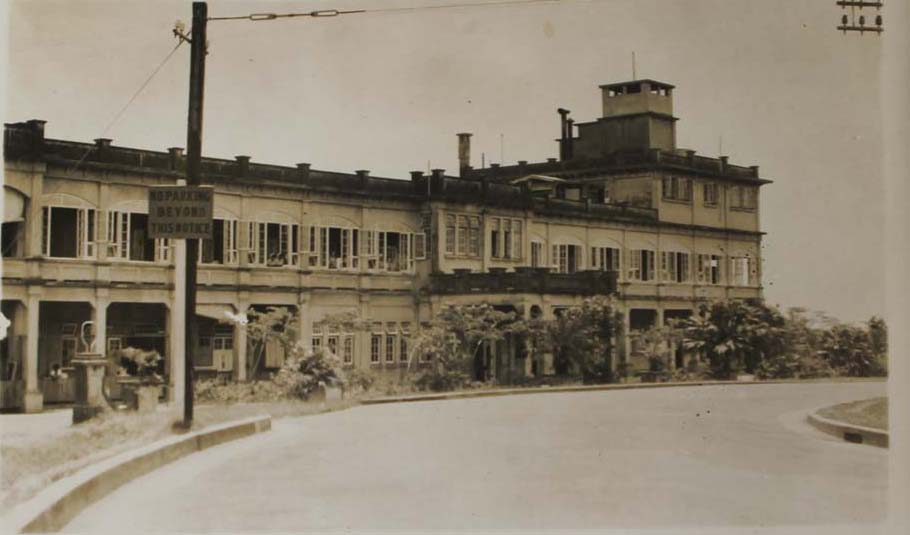SITTING on a hill at Waimanu Rd and overlooking the Suva Harbour is a centennial-year-old building.
With its style of architecture, one can easily tell that it was built during the colonial period when Fiji was under the leadership of the British Crown.
This building has seen and survived some historical events in Fiji including the visits of Prince Charles in 1970 and Queen Elizabeth II in 1953, four coups, survived about five category five cyclones, a 6.8 magnitude earthquake in Suva in 1953, and not forgetting the COVID-19 pandemic of 2020.
For over a century, the Colonial War Memorial Hospital has been a symbol of endurance and strength as it continues to operate despite the many challenges it faces.
Established in 1923 as a tribute to Fijians who served and sacrificed their lives in World War I, it also replaced the older Colonial Hospital that was relocated to Walu Bay, Suva from Levuka in 1894 after Suva was named as Fiji’s capital.
While delivering his speech for the opening ceremony in 1923, British lawyer and Fiji politician Robert Crompton said the first idea that was brought up was to build a club house in Suva which could be used by returning soldiers and members of the Defence Force.
It was Australian-born Fiji Legislative Council member Sir Henry Marks who came up with the idea of a central hospital to commemorate the fallen. He also personally gave 5000 pounds ($14,821) towards the building, another 5000 pounds through his company and an X-ray machine.
Donations were also made by the Colonial Sugar Refining Company, Morris Hedstrom Ltd, Brown and Joske, and other anonymous individuals and companies.
Government, as promised, then matched the monies raised, pound for pound.
When the hospital first opened its doors, it had a total of 108 beds with 27 staff, including two doctors.
Editor Authur Alban Wright, in his book ‘The Colony of Fiji 1874-1929’, said the staffing of the hospital consisted of 17 Europeans and ten native nurses.
“The main buildings are ferro-concrete, and contain an out-patient department, administrator offices, ward accommodation for twenty-eight Europeans and eighty natives, kitchen, laundry, operating-room, X-ray-room, clinical laboratory, nurses home, and lecture-room,” Mr Wright explained.
“The hospital is fitted throughout with hot and cold water, electric light, telephones, and a water carriage sewage system.”
Also, most people are not aware that the CWMH site is home to the oldest medical school in the Pacific islands.
In 1925, a proposal was made to enlarge the existing Native Medical School, which was established in 1885, to accommodate students from surrounding island nations as the Pacific region.
The idea to centralise medical governance in the Pacific through a medical school for native youths was driven by the aftermath of several critical epidemics that ravaged the Pacific. For example, the 1918 influenza pandemic in Western Samoa, and the Fiji’s measles epidemic in 1875-76.
Following a declaration of financial assistance by the International Health Board of the Rockefeller Foundation (RF), the Fiji Government at that time donated the grounds adjacent to the CWMH as construction site for the new Central Medical School.
Construction began in August 1927 and the school was formally opened on December 29, 1928.
In 1934, an additional 3700 pounds was allocated by the RF for additional assistance in building a new wing of the school with a bacteriological lab, pathological lab, and a post-mortem room.
The Central Medical School is now known as Hoodless House.
Renovations and developments at the CWMH
In 1990, the Fiji government and Japanese government signed an agreement for Japanese consultants to conduct a basic design study for the redevelopment of CWMH and the Fiji School of Medicine (FSM).
FSM head at the time Professor Ian Lewis said the agreement meant planners would work on designs for the new building.
He said the redevelopment were in three stages and included works at FSM that would cost between $60million and $80m.
The development included a general outpatients clinic, specialised clinics, an accident and emergency unit, a diagnostic unit, an operation unit, a central supply and sterilising unit, a pharmacy, blood banks, and acute care ward.
The plan also included the establishment of a Central Medical Library at the CWMH compound which will house collections of medical information, including books and journals.
A report gathered by the Japan International Cooperation Agency (JICA) for the planned redevelopment stated that “although old defects on CWM Hospital have propagated, it did not seem to be in a neglected condition”.
However, the report also said there were frequent troubles in maintenance owing to environmental problems caused by “unstable water supply and power, manual problem caused by insufficient skill, and local problem caused by insufficient maintenance service”.
By this time there were 402 beds at CWMH.
In 2011, a dental clinic was opened after three months of renovation, including a patient waiting room was also constructed.
A new urology centre was commissioned in 2013, including a state of the art lithotripter, a CT scanner and two new operation theatres.
Apart from renovations and redevelopment projects carried out by government and its international partners, there was also been extensive renovations done by organisations such as the International Women’s Association over the years. These developments improved operations at certain units and departments at the hospital.
l Next week we will look at the allocations that’s been budgeted by the Fijian Government for CWMH over the years, and how these funds have been used.



